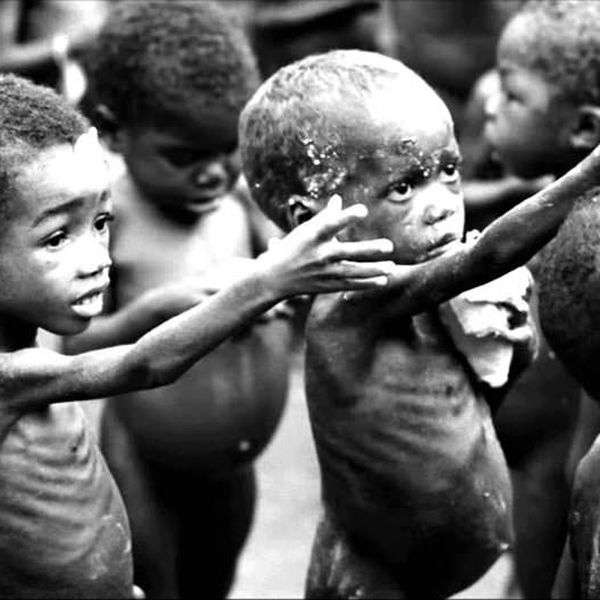Hunger, Violence and Conflict
In addition, hunger is also the source and consequence of both violence and militarism. Widespread poverty and hunger result in dissatisfaction and disappointment with the governments that seem to neglect the plight of hungry poor. Through war and conflict, the weakest people of the population endure the most, for example; hunger increased dramatically in countries undergoing armed war and political turmoil from 1991 to 2001 in Africa, most of which have seen long-term violence and conflict, food production per capita dropped by an average of 12.4 per cent (Dziedzic, 2007). Liz Young suggested that this was due to the governments involved in conflicts tend to invest in arms purchases and militarization rather than in agricultural improvements or any social or economic improvements. The hungry poor struggle when food stocks are not mobilized and consequently, the inability of the governments to organize and react to crop and economic failures is essentially the cause of long-term human sufferings in famine areas (Rorabacher, 2010).
Women and Elderly Populations
Moreover, economic growth alone does not guarantee universal redistribution of wealth as each country has woven its social structure irrespective of its income. Disadvantaged groups tend to appear left furthest behind. This discrimination is always experienced by racial, ethnic and religious minorities. Women and girls are the most vulnerable in these groups than their male counterparts. Von Grebmer et. al (2017) asserted that most types of persistent malnutrition are directly related to low birth weight and child and infant nutrition status which are connected to women’s lack of power in their home and community. Hence, gender relations also favours boys who are seen as potential breadwinners over girls who are seen to be burdens of the family. To illustrate, in rural area Punjab in India, 21 percent of girls in low-income households suffer from malnutrition as opposed to 3 percent of boys in the same household and boys with low-incomes reportedly fare better than girls with upper-incomes (UNDP, 1995, 35, as cited in Liz Young, 1997). Similarly, senior citizens in both developed and developing countries are particularly susceptible to hunger and malnutrition. Elderly populations are increasing as people live longer, and in many countries with evolving lifestyles and family structures, the elderly get less support from their families (Cohen, 1995).
The Green Revolution
However, unfortunately, hunger has its myths as some simply are not true and often lead to blind alleys down. One of the myths is that Green Solution is the solution to solving hunger. The Green Revolution was introduced after World War 2, it has ever since helped to increase agricultural productivity all around the world with its inclusion of ‘high tech’ methods of farming (Rorabacher, 2010). This has led to a higher amount of agricultural produce as the output is harvested more frequently. The revolution, thus, has helped increase life expectancy as it could cope with the demand for food. The death rate has also decreased following the introduction of agricultural improvements. Although the Green Revolution has helped increase agricultural productivity with farming has been modernized as optimistic irrigation schemes being carried out and “miracle” seeds, latest pesticides, fertilizer and equipment were accessible, the poor distribution of the grown crops has had a crippling effect on the country of origin as the people there have only little distribution for them (Lappe et. al, 1998). These crops are mainly exported to other countries instead of feeding people. Hence, it is significant to battle the possibility of a ‘New Green Revolution’ fixated on biotechnologies that aims to accentuate inequality.
Influence of Environmental Disasters
Another myth of hunger is that environmental disasters make hunger inevitable. It is concerning that environmental catastrophe threatens the resources in food development but the trade-off between the climate and the demand for food in the world is not inevitable. Some countries are affected by unfortunate climate conditions which might make growing crops difficult. Conditions such as droughts have made it near impossible to grow sufficient crops to feed upon. The FAO, IFAD & WFP (2015) had predicted that 24 million or about a quarter would rise in the number of undernourished children by 2050 without climate change. These findings have formed a strong call for change but it is far from a judgment that hunger and famine are inevitable. As climate change is now imminent, the risks are regulated by human control and thus, by fixing the food system’s inequities and inefficiencies, it is guaranteed that an individual will be more likely to survive from starvation. This is through the reduction of emissions and better carbon conservation that will help the smallholder farmers who are the majority of the hungry poor as this climate-friendly farming technique is inexpensive.

